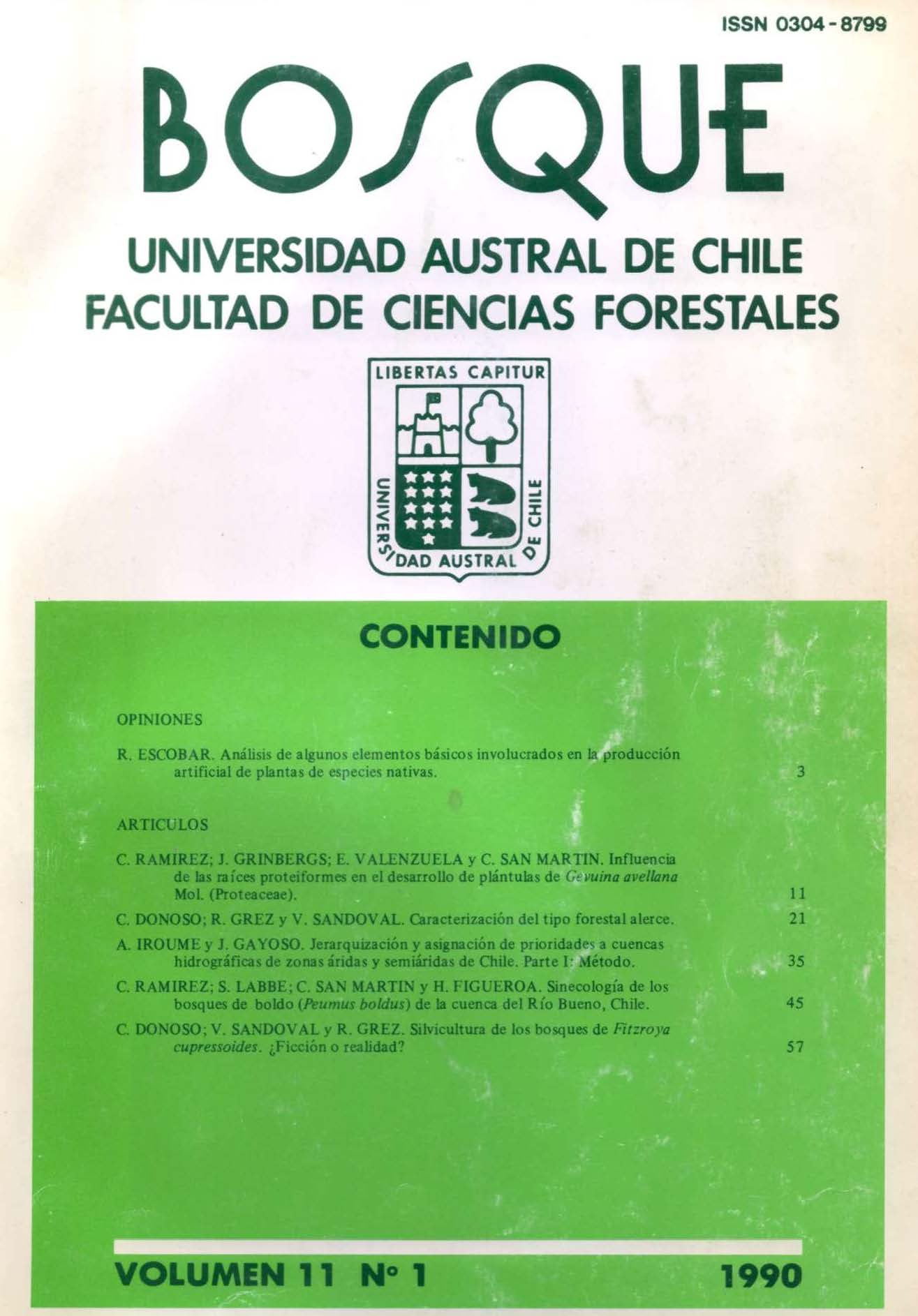Synecology of the Boldo (Peumus boldus) forest in trie Río Bueno basin, Chile
Main Article Content
Abstract
The sclerophyllous Boldo forest, in the Rio Bueno basin (Province of Valdivia, Chile), was studied. Its presence in a zone characterized by temperate deciduous forest is due to a more xerical microclimate which is produced by the effect of the rain-shadow caused by the Coastal mountain range which at this point, reaches a height of 1,000 m.
The study was done considering a vegetation table of 40 samples and 124 species. The samples were taken using the phytosociological methods from plots larger than the minimal area. On the table, frequency, number and coverage of the species were analyzed. Next, species were classified according to value of importance. Species were also classified according to their life forms and to their sociability with the dominant tree. Then, to order the samples and the species phytosociological and statistical analysis were done.
The low degree of homogeneity of the vegetation table confirmed the great floristic variability among the samples analyzed. These samples correspond to stands with different degrees of degradation caused by anthropogenic action. Human intervention is also responsible for the importance reached by the lianen and aloctone shrubby weeds. Phanerophytes and hemicryptophytes dominated the biological spectrum. This is an indication of the high degree of alteration in the stands. The plantsociological analysis indicated the scheme of a dynamic degradation of the forest, which is replaced by shrubs and anthropogenic prairies. The principal component analysis determined that light and humidity were the main factors in determining the distribution of the species in the stands under study. This Boldo forest was classified in the sintaxonomic scheme of the Chilean vegetation. Finally, the need of enforcing measures that will help to preserve some of the stands is presented.

